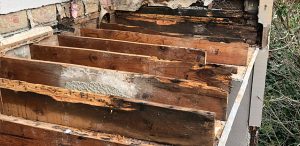Too hot to paint? No way.
Painting in the heat is different than during the cool, wet seasons, however, our service never changes. Our team has the expertise to ensure each project is done with high-quality workmanship and the correct products are used each time.
Success in the warm months:
Just like an art project, paint typically dries faster in warmer temperatures, than it does in the cool winter months. Painting apartment complexes and commercial buildings is not much different.
As in any other time of the year, success begins with the prep. This includes the need to provide adequate downtime (or drying time) after pressure washing the substrate. During the summer the water will evaporate faster and more forcefully; therefore, if a coating is applied too soon it will bubble as the vapors try to escape but are trapped by the film once dried. This is especially true on wood (or engineered materials) as it absorbs water deeper than any other substrate, but in general, it’s a rule that must be followed regardless of the substrate.
For metal, workability lies on the surface temperature. It must be painted early in the morning before it heats up. If that is not possible, the coating must be applied very thin so it will not crack as it dries from the inside out or surface to ambient air.
Since the paint dries so quickly in the heat it cannot be worked or handled much, if it’s overworked it will show spray and roller patterns. The key is having skilled tradesmen, a foreman that knows not only how to spray the material, but what equipment is needed and how to properly use it. The right tip and pressure on the spray rig go a long way when spraying paint during the hot summer months. A skilled, experienced foreman will know what he’s working with and will adjust his spray pattern accordingly to vanish spray lines and leave a uniform finish without having to do the same task multiple times. Skilled and experienced painters/journeymen know how much they can work the material and how long they have until the roller and brush begin to leave stipples and brush marks.
Types of paint to be used in the heat:
The question is not whether or not it’s the correct paint. Rather, it is whether or not the application method is proper for the coating and substrate.
Most coatings are engineered to be used in the heat. However, not all are applied or worked the same way. High solid coatings are more likely to show patterns if overworked or if they are applied with the incorrect equipment and unskilled workmanship. Two-component coatings have a shorter pot life in the heat and stains are susceptible to “shinners”. Once again, the key is to have professional, experienced tradesmen handling the materials.
Safety first in the heat:
On top of proper coatings, applications, and quality workmanship – we hold safety to be our #1 priority all the time, with an increased focus during the hot months. We make sure there is ample water supply for our team members on the job sites and breaks are taken in the shade. If it is an option to paint earlier in the day before the peak temperatures, we change the time of day we paint. Lastly, leadership members train foremen to recognize the signs of heatstroke and there is always a plan for emergencies set in place prior to starting each project.
B. Taylor Painting would love to be your trusted contractor for all painting projects. If we can help you, contact us today at www.btaylorpainting.com.




